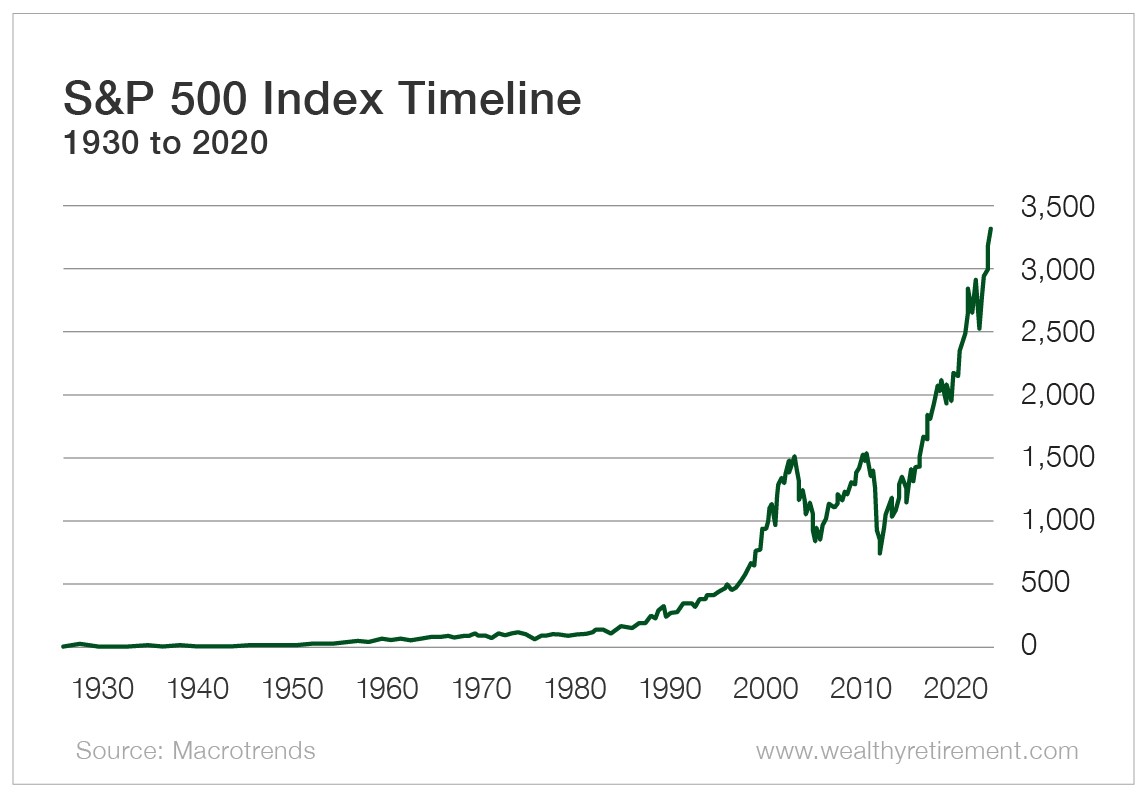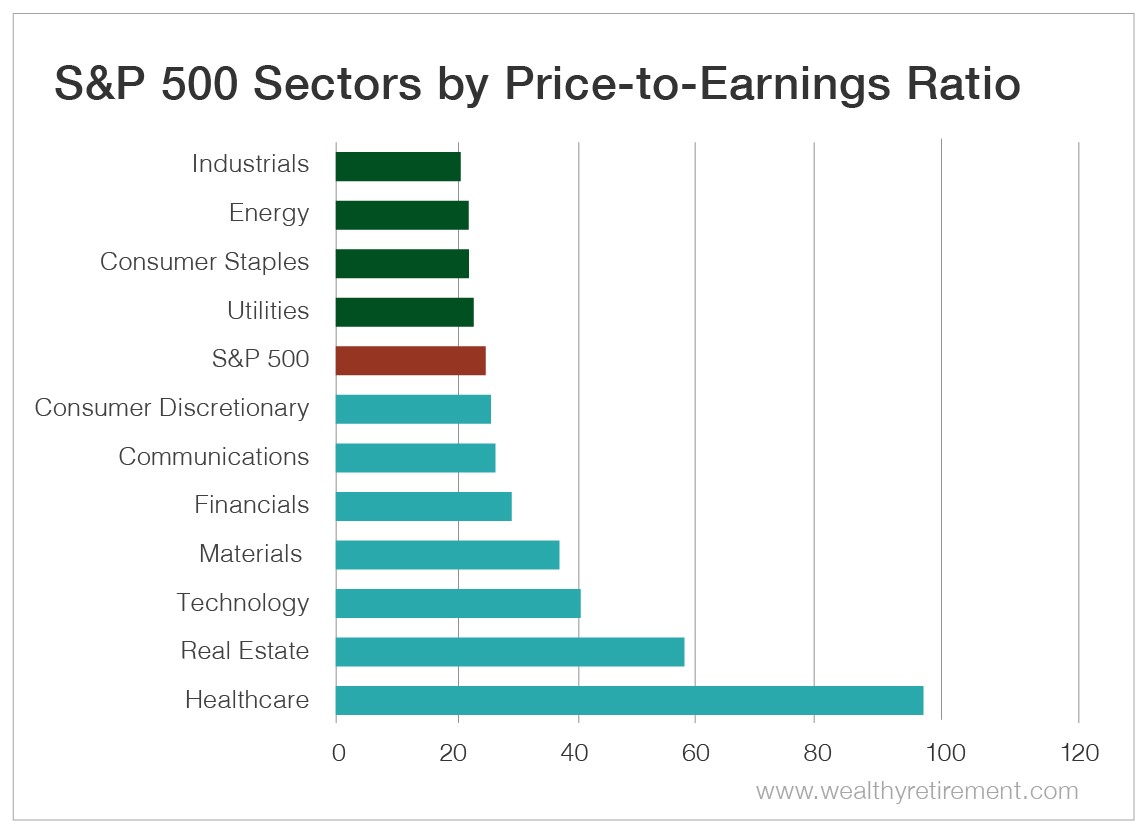Editor’s Note: This week has been a doozy for investors across the board.
The worst day in the market in two years has led to an even larger downturn over the week. The sudden drop inspired by COVID-19 (the disease caused by the novel coronavirus) epidemic left many investors running for the hills.
But they should have run for their wallets instead…
Today, we’ll hear from Matthew Carr, editor and trends expert at our sister e-letter Profit Trends. Matthew took a deep dive into the trends that made this sell-off, and he’s certain that momentary downturns like this are prime buying opportunities.
Read on for Matthew Carr’s take on the market’s recent downturn.
– Mable Buchanan, Assistant Managing Editor
One afternoon in my 20s changed my outlook on investing, volatility and the markets.
It altered the course of my life, even though I didn’t know it at the time.
We were going through a difficult, tumultuous stretch.
Everything was falling.
I turned to my markets editor, nearly in a panic, and asked, “Should we tell our people to sell? Should we get out?”
He calmly stood up, walked over to my desk and said, “Pull up a historic chart of the S&P 500.”
“Find me the Great Depression…
“Show me Black Monday…
“Show me Black Tuesday. Point out any of the darkest days in the market’s history.”
I couldn’t really. They were just blips on the graph.
He said, “There will be down days, down weeks, down months and even down years… But the market ultimately moves in only one direction: up.”
My editor said that if I remembered this, I’d always have a leg up on everyone else in the market when the inevitable hits the fan.
Now, when that wisdom was imparted to me, the Great Recession hadn’t happened. It wasn’t even on anyone’s radar.
But that piece of advice changed my life. It altered my fortune and my future.
It changed how I viewed volatility, sell-offs and panics.
I no longer feared them. I welcomed them.
And recognized them for what they truly are: opportunities.
Ways to Play the Market Meltdown
There are days it feels like the world is ending. That there’s red across the board.
Monday was one of those.
To start the week, the Dow Jones Industrial Average dropped more than 1,000 points.
For those keeping score, that’s a nearly 4% decline.
And it represented the largest one-day loss for the markets in two years.
The coronavirus conniptions were back in force as Italy and South Korea confirmed cases.
In the panic, investors searched for safe havens. They were looking for places to park their hard-earned dollars to eke out gains until the storm passed.
Well, for those still seeking shelter or for those spooked into security, I’m going to quickly highlight some safe havens today.
Back in January, my colleague David Fessler and I outlined our thoughts for the market in 2020. And we’re seeing those play out.
Volatility surged to start 2020 with the CBOE Volatility Index (VIX) up more than 76%.
The pushes and pulls from coronavirus fears have created choppy waters. Perfect conditions for volatility traders.
But the VIX isn’t the only asset racing higher as the broader markets tank. The Grayscale Bitcoin Trust (OTC: GBTC) is still up 23% year-to-date. A reward halving on the horizon is goosing gains in the wake of volatility.
And then we have the standard safe havens – like precious metals, bonds and Treasurys – that are outperforming the S&P 500 year to date…
- The Aberdeen Standard Physical Palladium Shares ETF (NYSE: PALL) was up 48% as recently as yesterday.
- The iShares 20+ Year Treasury Bond ETF (Nasdaq: TLT) is up 13%.
These will continue to float higher as the markets peter out.
But let’s remember the real lesson as well… sell-offs are opportunities.
Think of them as red tag sales of the greatest companies in the world.
In fact, there are four sectors right now that are cheaper compared with the price-to-earnings (P/E) ratio of the S&P 500.
The healthcare sector’s P/E is high. But that’s largely because of Allergan (NYSE: AGN).
Sell-offs mean opportunities are bountiful. Take advantage of them.
Remember, your time horizon isn’t a couple of hours or a day. Even if you’re a day trader, you’re building wealth for the future. For your future. That can be five years, 10 years or 50 years from now.
In those moments – like Monday – when the world feels like it’s about to end… take a breath.
Make a shopping list of all the companies on sale that you can now own at a significant markdown.
The markets eventually return to their mean.
And they ultimately head in only one direction.
Up.
Learning that in my 20s changed my life. I’ve seen more sell-offs since then than I can count – both benign and global catastrophes. They’re reminders to own safe haven assets, and they provide opportunities to go shopping for discounts.
Good investing,
Matthew


